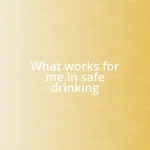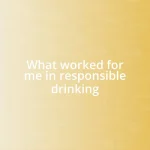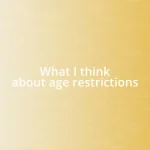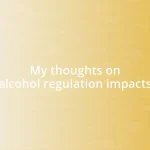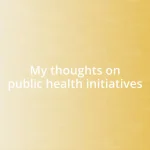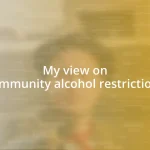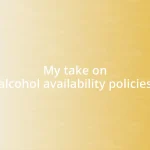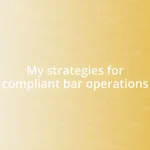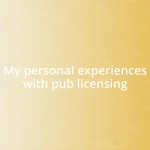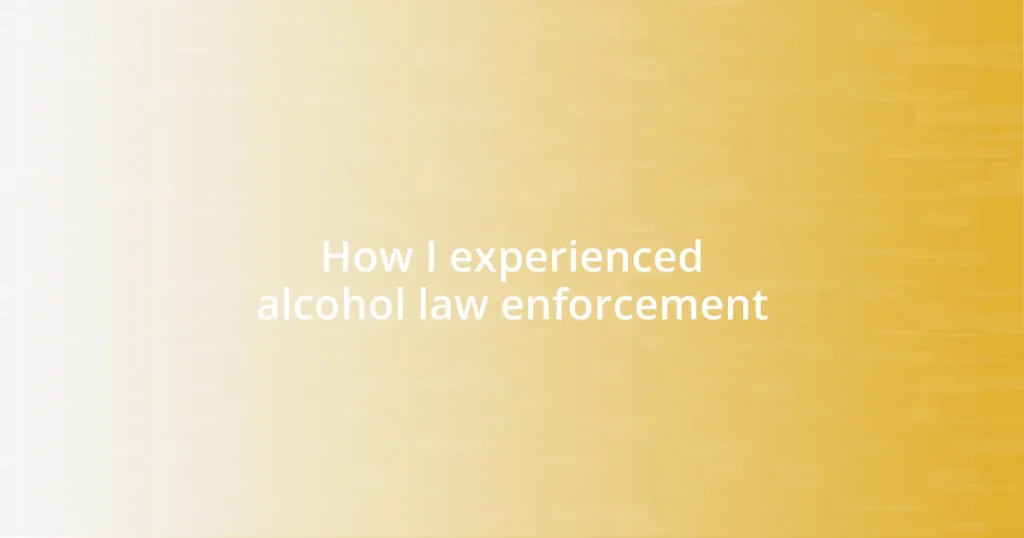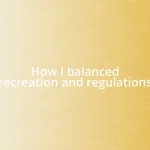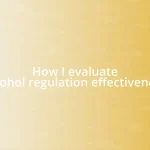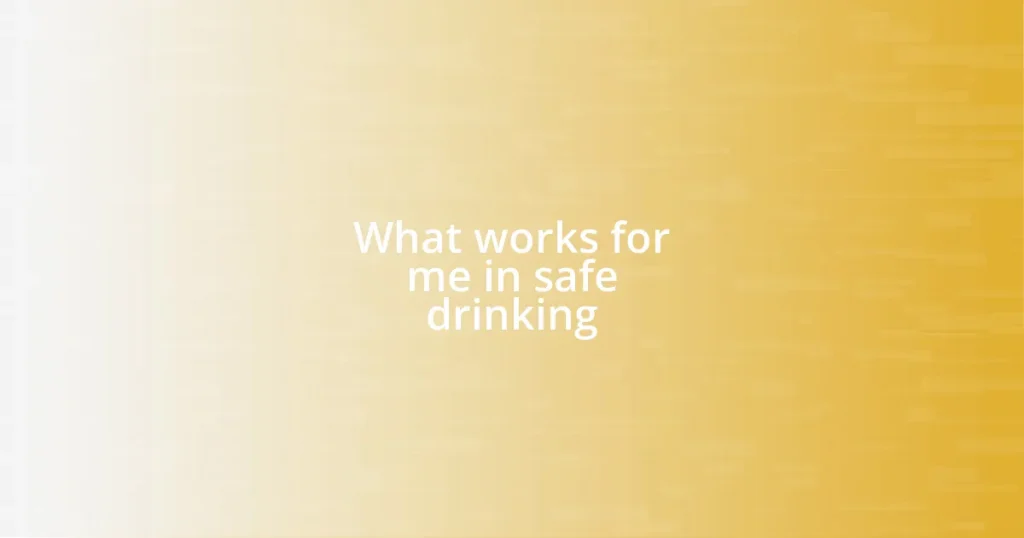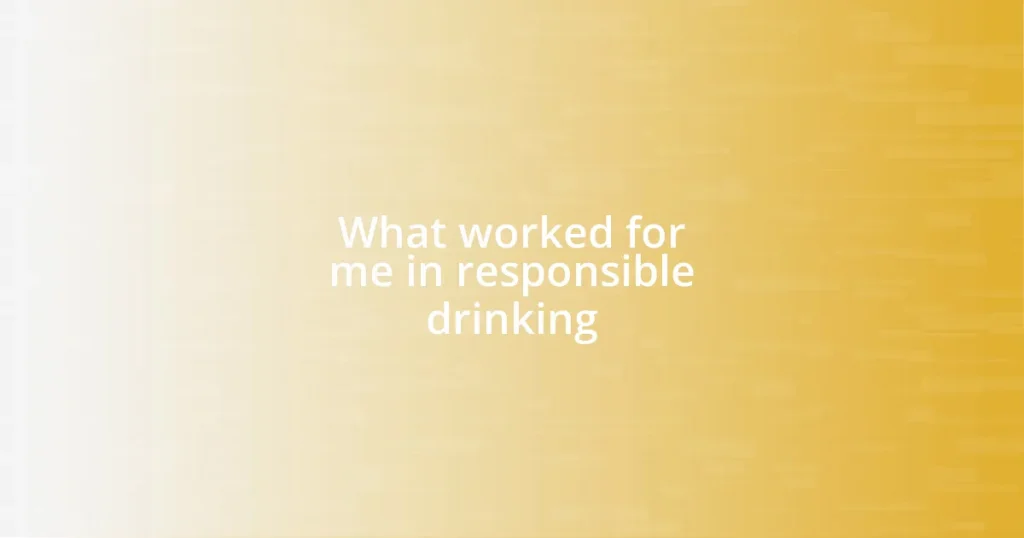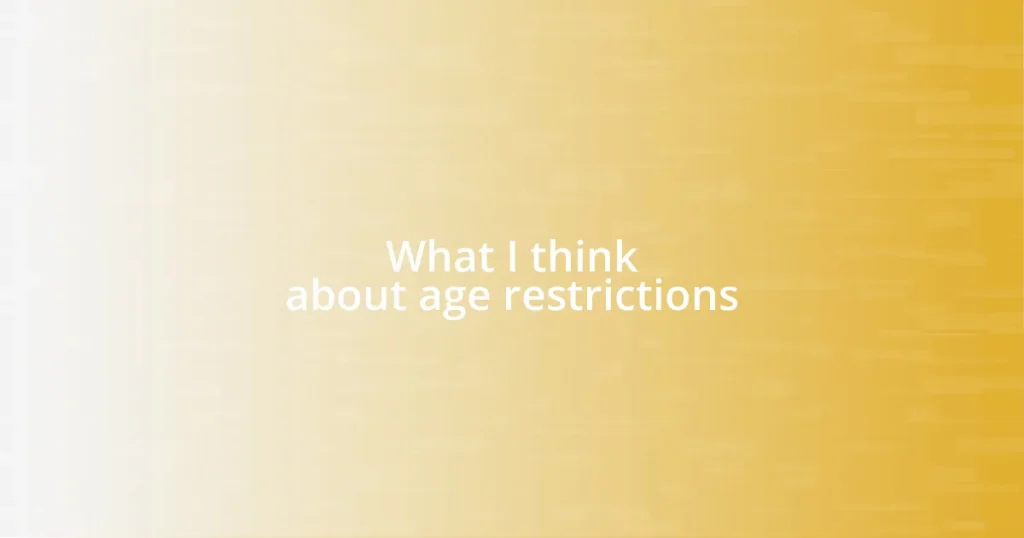Key takeaways:
- Alcohol law enforcement balances public safety and personal freedom, highlighting the complexities involved in regulation.
- Officers face challenges such as unpredictable behavior and limited resources, requiring emotional intelligence and effective communication.
- Proactive community engagement and educational outreach enhance compliance, fostering trust between law enforcement and the public.
- Future trends indicate a focus on data analytics, creative educational campaigns, and harm reduction approaches in alcohol regulations.
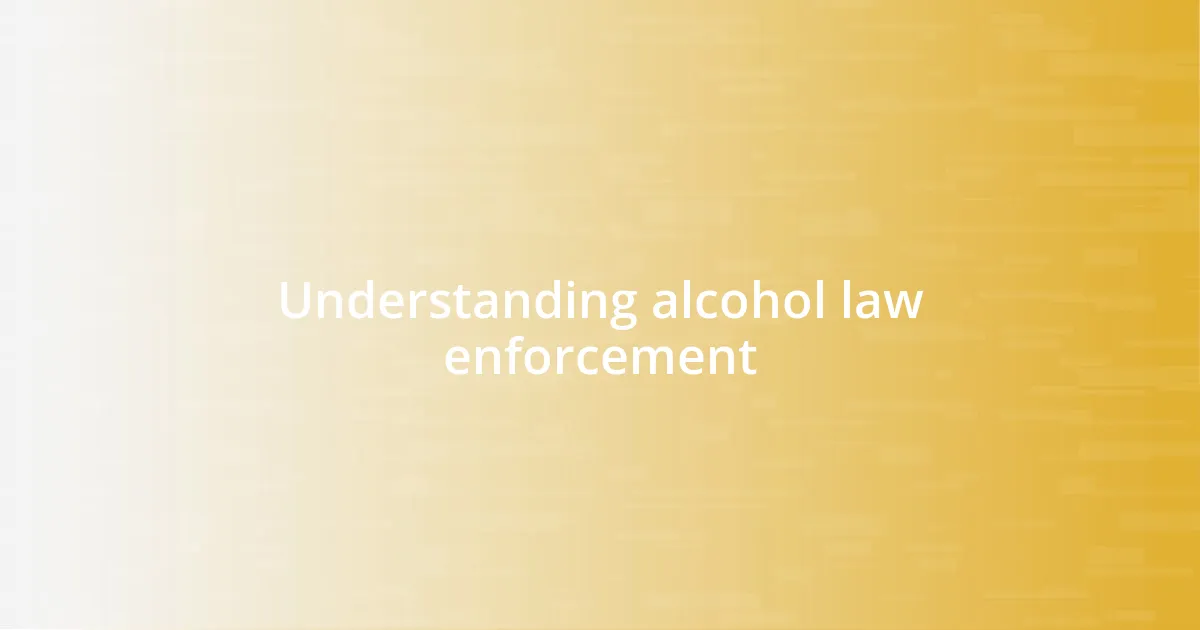
Understanding alcohol law enforcement
Alcohol law enforcement encompasses a range of practices aimed at regulating the sale and consumption of alcoholic beverages. I’ve often found that these laws can seem remote until they impact you personally. For instance, I remember a night out when a friend unexpectedly lost her driver’s license due to a simple misunderstanding over the legal limits. It really opened my eyes to how the enforcement of these laws isn’t just a formality; it can change lives in an instant.
While these regulations are often viewed as heavy-handed, they serve a critical purpose in promoting public safety. Have you ever considered how much effort goes into training officers to recognize signs of intoxication? I once attended a seminar where an officer shared how they learned to identify not just intoxication but also potential issues like underage drinking. It’s fascinating—and a bit alarming—how detailed their training is, yet it made me appreciate the complexities behind alcohol law enforcement.
Understanding alcohol law enforcement also involves recognizing the balance between regulation and personal freedom. Reflecting on my own experiences, it’s easy to feel frustrated when caught up in the rules, but then I think about the responsibility that comes with drinking. How do we find that balance between enjoying a night out and ensuring everyone’s safety? It’s a delicate dance, and the enforcement agencies play a pivotal role in guiding us through it.
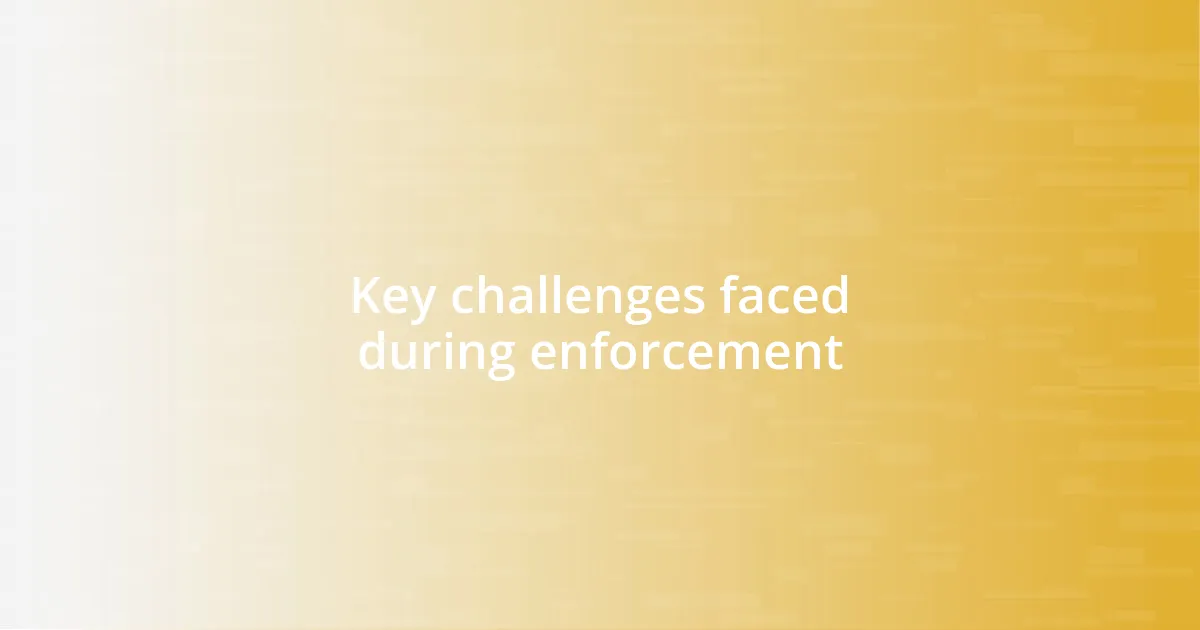
Key challenges faced during enforcement
One of the main challenges officers face during alcohol law enforcement is dealing with the unpredictability of human behavior. I recall a time at a local festival when I watched an officer attempt to diffuse a situation involving a group of rowdy party-goers. Despite the officer’s calm demeanor, the tension escalated quickly, showing just how difficult it can be to manage the dynamics of people who may not recognize their own limits. It’s a dance that requires not just knowledge of the law but also emotional intelligence and quick thinking.
Key challenges faced during enforcement include:
- Unpredictable Behavior: Individuals often react unpredictably when approached about their alcohol consumption.
- Public Perception: Officers may face hostility or distrust from the community, complicating their missions.
- Resource Limitations: Many enforcement agencies do not have the manpower or funding necessary to adequately cover high-risk events.
- Legal Loopholes: Navigating the complex web of alcohol laws can lead to confusion and misinterpretation.
- Compounding Issues: Underlying social factors, like mental health or economic distress, can complicate enforcement efforts.
Addressing these challenges requires a blend of strategy, empathy, and effective communication. I’ve witnessed firsthand how proactive engagement can turn a potentially volatile situation into a teachable moment. One officer, for instance, turned a reprimand into a discussion about the risks of binge drinking, which seemed to resonate with the crowd more than any legal warning would have. It really underlined the fact that enforcement isn’t just about handing out tickets—it’s about fostering understanding and ensuring safety.
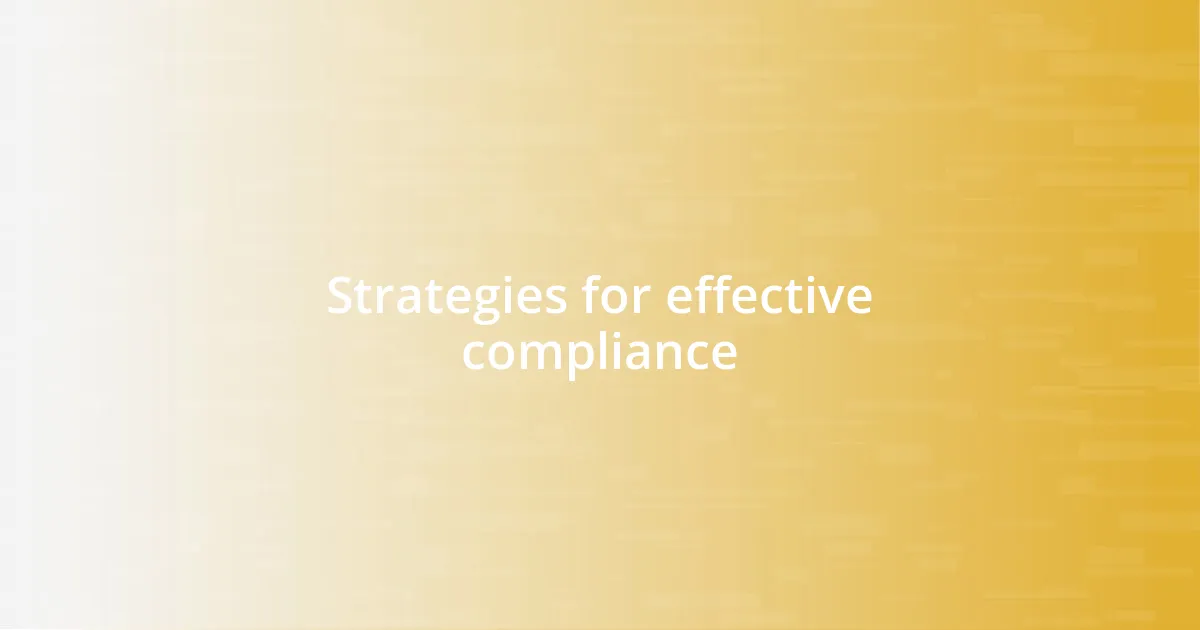
Strategies for effective compliance
Strategies for effective compliance often hinge on proactive communication and community engagement. In my experience, when enforcement agencies collaborate with local businesses—like bars and restaurants—they create a culture of responsibility. I remember attending a workshop where local bartenders shared their commitment to checking IDs rigorously and promoting safe drinking. It was inspiring to see establishments take collective responsibility for compliance, ensuring everyone enjoyed their evenings without incident.
Another effective strategy involves educational outreach aimed at the public. I once participated in a community event where officers hosted a session on responsible drinking. The informal setting really helped break down barriers. People were willing to ask questions they might avoid directly confronting police. This approach fostered an atmosphere of trust and understanding. By incorporating interactive elements—like a mock sobriety test—attendees could appreciate the challenges of maintaining sobriety in social circumstances, which I found to be both eye-opening and memorable.
Finally, leveraging technology can significantly enhance compliance strategies. I had the opportunity to observe an initiative where police used an app to educate the public about liquor laws and showcase the consequences of violations. The use of real-time data not only made the laws more accessible but also allowed young people to self-regulate their drinking decisions. It’s a compelling example of how integrating tech into enforcement can lead not just to adherence, but to a more informed and responsible community.
| Strategy | Description |
|---|---|
| Proactive Communication | Collaboration with local businesses to promote responsible drinking |
| Community Education | Outreach sessions to build trust and understanding about alcohol laws |
| Leveraging Technology | Utilizing apps for transparent education on liquor regulations |
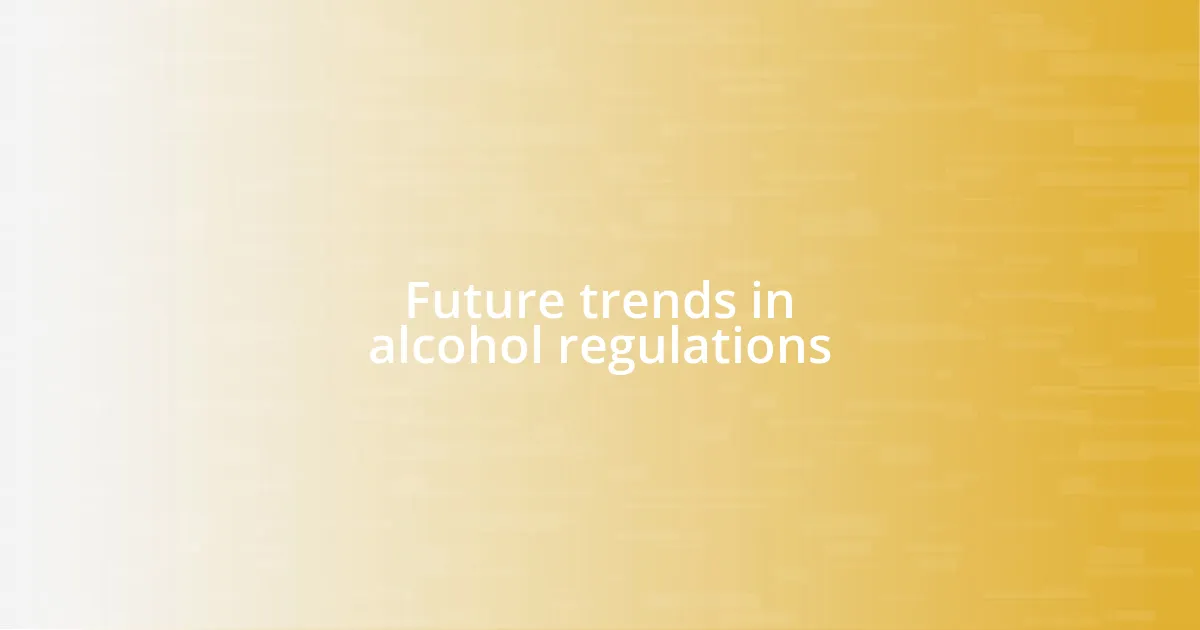
Future trends in alcohol regulations
Future trends in alcohol regulations are likely to reflect a growing emphasis on public health and safety. One trend I’ve noticed is the increasing use of data analytics to identify patterns in alcohol-related incidents. For instance, some cities are now mapping out areas with higher rates of intoxication-related offenses, allowing law enforcement to allocate resources more effectively. It’s fascinating to think about how data can drive a more proactive approach—tailoring enforcement to where it’s needed most.
I also foresee a shift toward more innovative educational campaigns targeting younger audiences. During a recent community meeting, local youth leaders shared how relatable and engaging content can make a difference. Imagine a campaign that repurposes popular social media trends to share messages about responsible drinking! I can’t help but wonder, could creative storytelling be the key to reaching those who often tune out traditional messaging?
Moreover, we might see a push for regulations that focus on harm reduction rather than just punitive measures. Reflecting on my interactions with the community, I’ve seen firsthand how a supportive approach can yield better outcomes. For example, some areas are exploring models where individuals caught in minor violations are offered counseling or education instead of fines. Doesn’t it make more sense to help people rather than just penalize them? This not only fosters understanding of alcohol’s risks but also encourages responsible habits.
